Is there another jazz legend with a discography as far-reaching and ambitious as Charles Mingus? His influence extended beyond traditional jazz, reaching into other genres like avant-garde, experimental, and contemporary classical music. Not to mention his powerful political songs, blues-tinted bops and gospel-tinged classics.
As a virtuoso bass player, he was complex and technically skilled, but his true talent lay in his ability as an imposing and distinguished bandleader. He allowed his musicians to improvise and interact with each other, resulting in dynamic and often thrilling live shows. In the studio, this resulted in complex harmonies and serpentine structures with powerful emotional depth.
Charles Mingus is widely regarded as one of the most innovative and important figures in the history of jazz. Here are ten of his very best albums.
10 – Charles Mingus Presents Charles Mingus (1960)
You could be forgiven for thinking this is another of Mingus’ famed live albums. Forever innovative, Mingus ditched the Big Band and gathered together a quartet to record a studio album that resembles a night down your local jazz club.
This is a must-listen for Mingus fans, if not for the seamless and often brilliant interplay by the foursome (otherwise known as Mingus on bass, Ted Curson on trumpet, Eric Dolphy on alto sax and bass clarinet, and Dannie Richmond on drums). This is best heard on the rhythmic “Folk Forms, No. 1” and “What Love?”
It was also an important record for Mingus personally with Candid giving him more freedom to go political. The lyrics of “Original Faubus Fables” deal with racial segregation in a way that the previous version of Mingus, Ah Um never could.
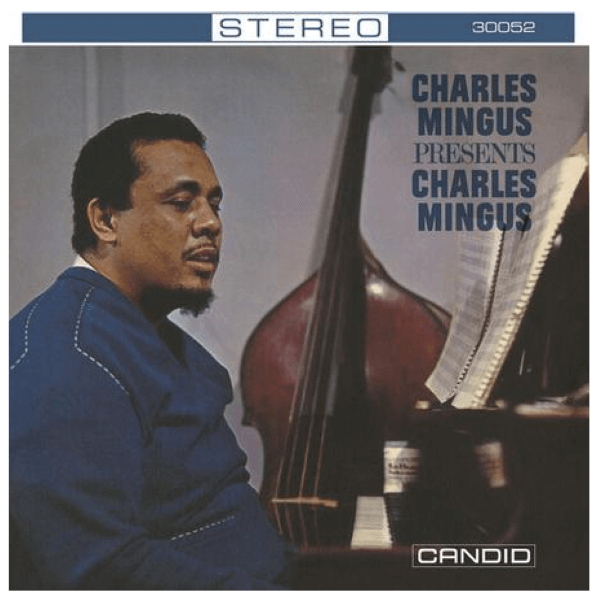
Charles Mingus
Presents Charles Mingus
(Candid)
Charles Mingus: bass; Ted Curson: trumpet; Eric Dolphy: alto saxophone, bass clarinet; Dannie Richmond: drums
Released December 1960
9 – Mingus Mingus Mingus Mingus Mingus (1964)
If you’ve ever wanted to hear a film noir score with a big band sound, this is your album. This quintuple-named album was Mingus’ last studio release until 1971’s Blue Bird. It was recorded around the same time as Black Saint and the Sinner Lady, with “Celia” and “I X Love” offcuts from the same sessions.
Here, Mingus earns his stripes as an excellent bandleader. He somehow manages to direct a revolving door of musicians (fifteen in total) towards a full-bodied and boundary-pushing album made up of complex arrangements. Despite a lack of new material, this is a memorable session from an extraordinarily talented group of musicians.
Side two’s “Theme for Lester Young” (a reworking of “Goodbye Pork Pie Hat”) is very moving, while the opulent “Celia” is one of his finest melancholic numbers to date.

Mingus
Mingus Mingus Mingus Mingus Mingus
(Impulse!)
Charles Mingus: bass, piano, narration; Eddie Preston, Richard Williams, Rolf Ericson: trumpet; Britt Woodman, Quentin Jackson: trombone; Don Butterfield: tuba; Jerome Richardson: soprano, baritone saxophone, flute; Dick Hafer: tenor saxophone, clarinet, flute; Booker Ervin: tenor saxophone; Eric Dolphy: alto saxophone, flute, bass clarinet; Charlie Mariano: alto saxophone; Jay Berliner: guitar; Jaki Byard: piano; Walter Perkins, Dannie Richmond: drums
Released January 9, 1964
8 – The Clown (1957)
Mingus’ second album for Atlantic, The Clown is a concept album about a clown who tried to please people but whom nobody liked until his death. To help tell the story, he drafted in Jean Shepherd to provide improvised narration on the title track that ends the album.
While Shepherd’s appearance is divisive among fans, there is no doubting the fact The Clown contains some Mingus classics. The album’s tone is set by its broody and intense opener “Haitian Fight Song” (later re-recorded under a different name on Oh Yeah), one of Mingus’ most powerful songs. The true highlight, however, is “Reincarnation of a Lovebird”, a beautiful tribute to The Bird himself, Charlie Parker.
Mingus would go on to release more complete albums, but this one was an important step in his evolution as an artist.
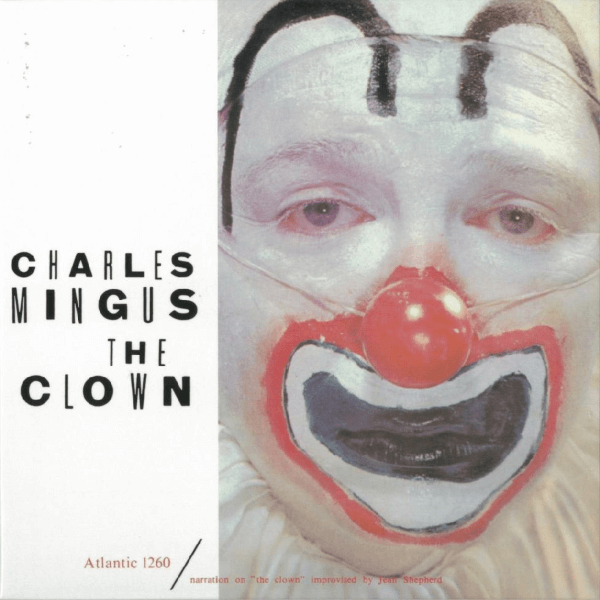
Charles Mingus, The Charles Mingus Jazz Workshop
The Clown
(Atlantic)
Charles Mingus: bass; Shafi Hadi: alto and tenor saxophone; Jimmy Knepper: trombone; Wade Legge: piano; Dannie Richmond: drums; Jean Shepherd: narration (#4)
Released September 1957
7 – Blues & Roots (1960)
This largely improvised album is wall-to-wall with blues, New Orleans Dixieland and swing. Mingus and his band rip through all six tracks at breakneck speed. “Wednesday Night Prayer Meeting” is outstanding and unique. The opener sets the scene for nigh on forty minutes of a Mingus bass masterclass. Just listen to the way the bass throbs on “Tensions” or creeps up on you in “E’s Flat Ah’s Flat Too”. Jackie McLean (alto sax) and Pepper Adams (baritone sax) also shine with career-defining performances.
The album received mixed reviews upon release. However, it’s a record that has been much better appreciated posthumously.

Charlie Mingus
Blues & Roots
(Atlantic)
Charles Mingus: bass; John Handy, Jackie McLean: alto saxophone; Booker Ervin: tenor saxophone; Pepper Adams: baritone saxophone; Jimmy Knepper, Willie Dennis: trombone; Dannie Richmond: drums; Horace Parlan, Mal Waldron: piano
Released March 1960
6 – Oh Yeah (1962)
Oh Yeah is another idiosyncratic Mingus special with his trademark quirky titles thrown in for good measure. In Mingus’ fourth studio album for Atlantic, he traded in his usual bass for piano, teaming up with regular producer Nesuhi Ertegün and eccentric jazz multi-instrumentalist Roland Kirk.
The chemistry with Kirk is predictably magical, peaking on the bouncy “Eat That Chicken” (complete with manzello solo) and the rowdy “Hog Callin’ Blues” (David Bowie’s favourite jazz song). “Oh Lord Don’t Let Them Drop That Atomic Bomb on Me” shows a lighter comic side of Mingus’ politics, while the gospel-jazz “Ecclusiastics” displays his talent on the ivories, with lyrics that lend the album its title.
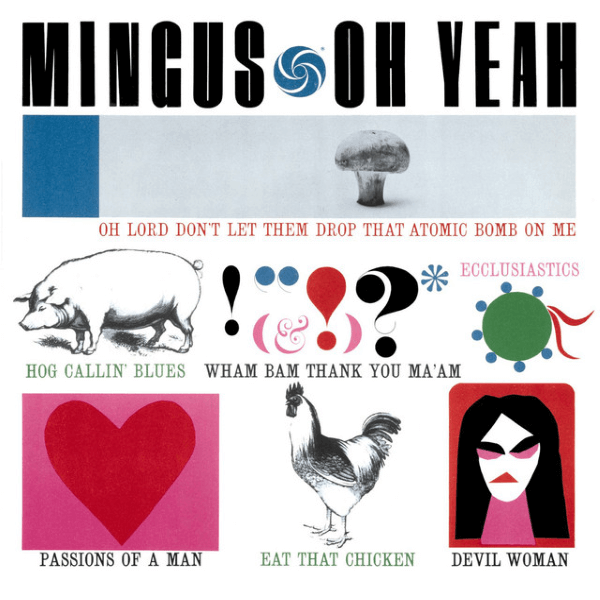
Charles Mingus
Oh Yeah
(Atlantic)
Charles Mingus: piano, vocals; Rahsaan Roland Kirk: flute, siren, tenor saxophone, manzello, stritch; Booker Ervin: tenor saxophone; Jimmy Knepper: trombone; Doug Watkins: bass; Dannie Richmond: drums
Released April 1962
Discover next the 10 Best Bill Evans Albums
5 – Mingus at the Bohemia (1955)
Five weeks before Mingus’ debut classic Pithecanthropus Erectus, he recorded a live Christmas performance at Club Bohemia, a former strip club in Greenwich Village. At the time, Mingus was well-known for his avant-garde style and was trying to forge a reputation as a respected arranger and bandleader.
This is a record where Mingus’ band really stars. There is an excellent turn from tenor saxophonist George Barrow, whose playing throughout is astonishingly good, and pioneering bebop drummer Max Roach, who strikes a musical conversation with Mingus on “Percussion Discussion.”
With “All The Things You C#” he manages (with great effect!) to combine Kern and Hammerstein’s “All The Things You Are” with Rachmaninoff’s “Prelude in C-sharp minor.” Mingus also includes compositions of his own, including “Jump Monk” and “Work Song.”
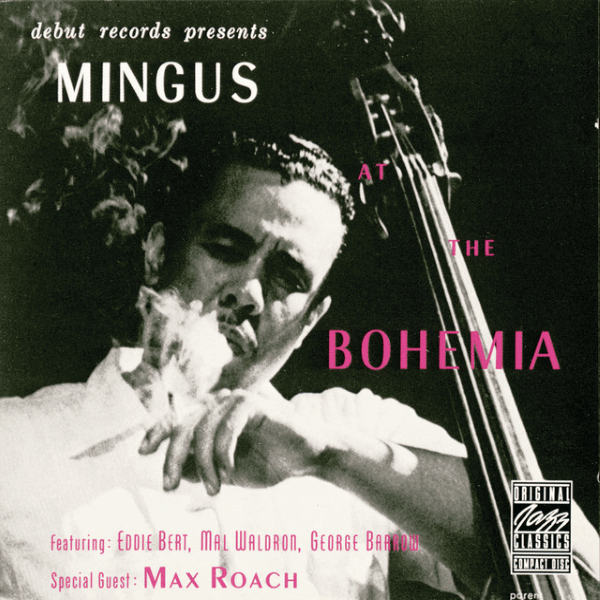
Charles Mingus
Mingus At The Bohemia
(Debut)
Charles Mingus: double bass; George Barrow: tenor saxophone; Eddie Bert: trombone; Mal Waldron: piano; Willie Jones, Max Roach: drums
Released August 1956
4 – Pithecanthropus Erectus (1956)
Mingus’ breakthrough remains a classic. The title refers to the first human fossil ever found, the Eugène Dubois-discovered Java Man. Mingus approached the album in a way he would deviate from throughout his career, offering guidance for song notes to his musicians by ear and leaving them to it. This challenge brought a union to a band consisting of Jackie McLean on alto sax, J .R. Monterose on the tenor sax, Mal Waldron on piano, and Willie Jones on drums.
Eager to make an impression, Mingus plays like a man possessed. The result is a truly innovative and groundbreaking LP which ticks off all of what would soon be Mingus trademarks. There’s the atmospheric street scene of George Gershwin’s “A Foggy Day,” the ballad “Profile of Jackie”, the epic “Love Chant” and the avant-garde and experimental title track.
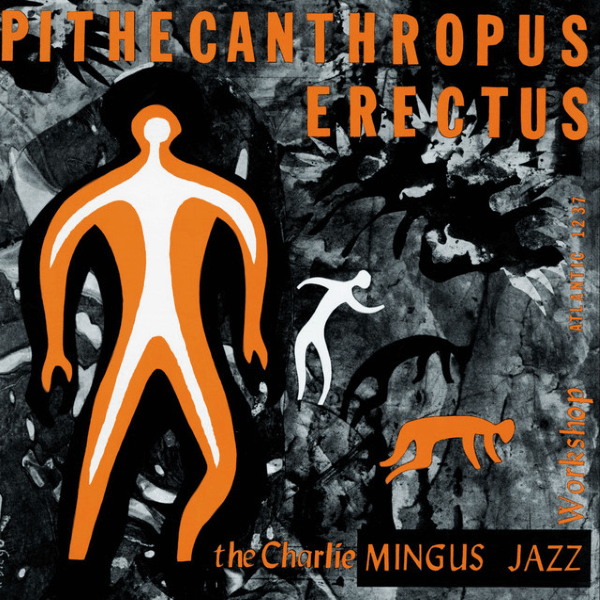
The Charlie Mingus Jazz Workshop
Pithecanthropus Erectus
(Atlantic)
Charles Mingus: bass; Jackie McLean: alto saxophone; J. R. Monterose: tenor saxophone; Mal Waldron: piano; Willie Jones: drums
Released August 1956
3 – Let My Children Hear Music (1972)
The album Mingus referred to as “the best album I have ever made.” Let My Children Hear Music has a bold and ambitious big band masterpiece that is so often overlooked in favour of more of his high-profile hits. You know the ones.
There are many jaw-dropping moments of genius on this record. Take your pick from the stunning improvisation of “Adagio Ma Non Troppo”, the intense rollercoaster of “Hobo Ho”, the melodic bop of “The I Of Hurricane Sue” or the supremely dark “The Chill Of Death” which features Mingus reading aloud a poem over dark orchestration.
It is everything Charles Mingus was during his lifetime: pretentious, ambitious, genius, unrelenting, irrepressible and unstoppable. The final product is a brilliant, absurd, dark and chaotic hour-long jazz odyssey.
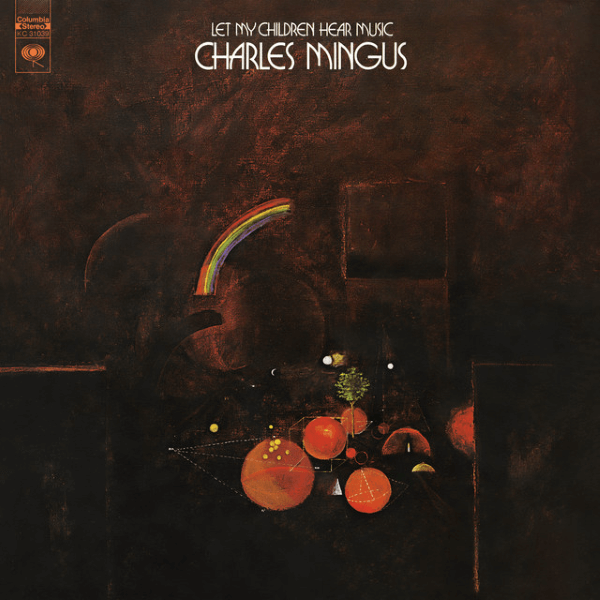
Charles Mingus
Let My Children Hear Music
(Columbia)
Soloists: Lonnie Hillyer, Joe Wilder: trumpet; Julius Watkins: French horn; Bobby Jones, James Moody: tenor saxophone; Charles McCracken: cello; Charles McPherson: alto saxophone; Sir Roland Hanna: piano; Snooky Young: lead trumpet; Dannie Richmond: drums
Released January/February 1972
2 – Mingus Ah Um (1959)
If you had to sum up Charles Mingus in one album, it would be Mingus Ah Um. This is the first record where Mingus announced to the world that he’d truly mastered his craft. He leads his band throughout an astonishing array of songs now considered Mingus classics, including the gospel jig “Better Git It In Your Soul”, Lester Young love letter “Goodbye Pork Pie Hat”, frenzied bop “Boogie Stop Shuffle” and the political “Fables of Faubus.”
It would be ungracious not to mention the exceptional performances from Booker Ervin, Jimmy Knepper, John Handy and Dannie Richmond, particularly on “Self-Portrait in Three Colors” and “Pussy Cat Dues”.
There may be tracks that pay tribute to greats Duke Ellington, Charlie Parker, Lester Young and Jelly Roll Morton, but with Mingus Ah Um, Mingus had managed to carve out his place in jazz history.
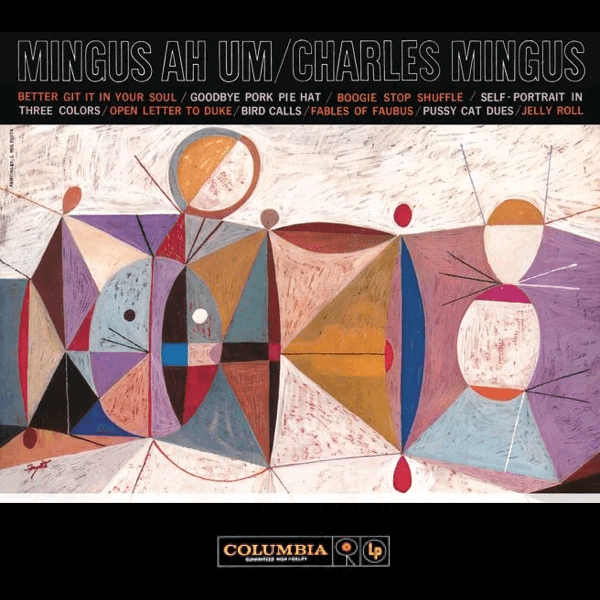
Charles Mingus
Mingus Ah Um
(Columbia)
Charles Mingus: bass; John Handy: alto sax, clarinet, tenor sax; Booker Ervin: tenor sax; Shafi Hadi: tenor sax, alto sax; Willie Dennis, Jimmy Knepper: trombone; Horace Parlan: piano; Dannie Richmond: drums
Released October 1959
Discover next the Greatest Year in Jazz History
1 – The Black Saint And The Sinner Lady (1963)
Mingus’ magnum opus is an immersive, obsessive, intense, beautiful and terrifying work of art. Previously written as a ballet, the album consists of one continuous composition divided into four tracks and six movements. The music is transcendental and trippy, dazzling and devastating, ethereal, often violent.
The band – razor sharp throughout – had recently completed a three-week residency at New York’s Village Vanguard. Charlie Mariano’s alto sax is astonishing, Quentin Jackson’s trombone is majestic and the horn section is extraordinary. The whole composition comprises of a series of tone paintings whereby each musician, including their bandleader, seems guided by an otherworldly force.
Of the record, the man himself described it as “my living epitaph from birth til the day I first heard Bird and Diz.” One of the most essential jazz records of the 20th century, this is Charles Mingus’ legacy.
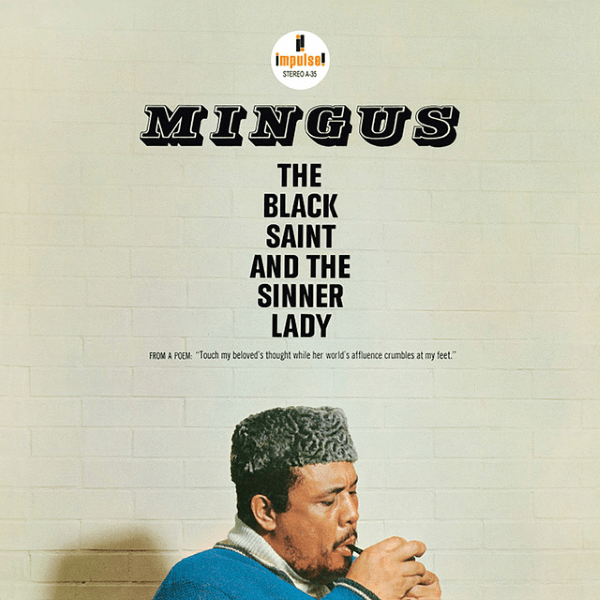
Mingus
The Black Saint And The Sinner Lady
(Impulse!)
Charles Mingus: double bass, piano; Jerome Richardson: soprano & baritone saxophone, flute; Charlie Mariano: alto saxophone; Dick Hafer: tenor saxophone, flute; Rolf Ericson, Richard Williams: trumpet; Quentin Jackson: trombone; Don Butterfield: tuba, contrabass trombone; Jaki Byard: piano; Jay Berliner: classical guitar; Dannie Richmond: drums
Released July 1963
Best Charles Mingus Albums
- 10. Charles Mingus – Presents Charles Mingus (Candid)
- 9. Mingus – Mingus Mingus Mingus Mingus Mingus (Impulse!)
- 8. Charles Mingus, The Charles Mingus Jazz Workshop – The Clown (Atlantic)
- 7. Charlie Mingus – Blues & Roots (Atlantic)
- 6. Charles Mingus – Oh Yeah (Atlantic)
- 5. Charles Mingus – Mingus At The Bohemia (Debut)
- 4. The Charlie Mingus Jazz Workshop – Pithecanthropus Erectus (Atlantic)
- 3. Charles Mingus – Let My Children Hear Music (Columbia)
- 2. Charles Mingus – Mingus Ah Um (Columbia)
- 1. Mingus – The Black Saint And The Sinner Lady (Impulse!)
